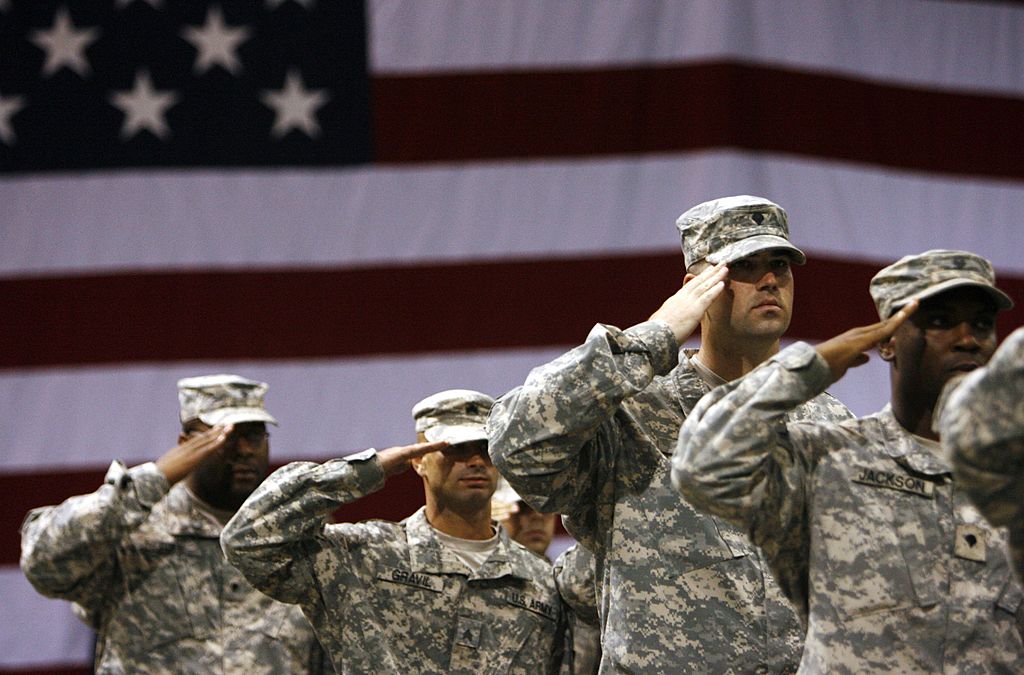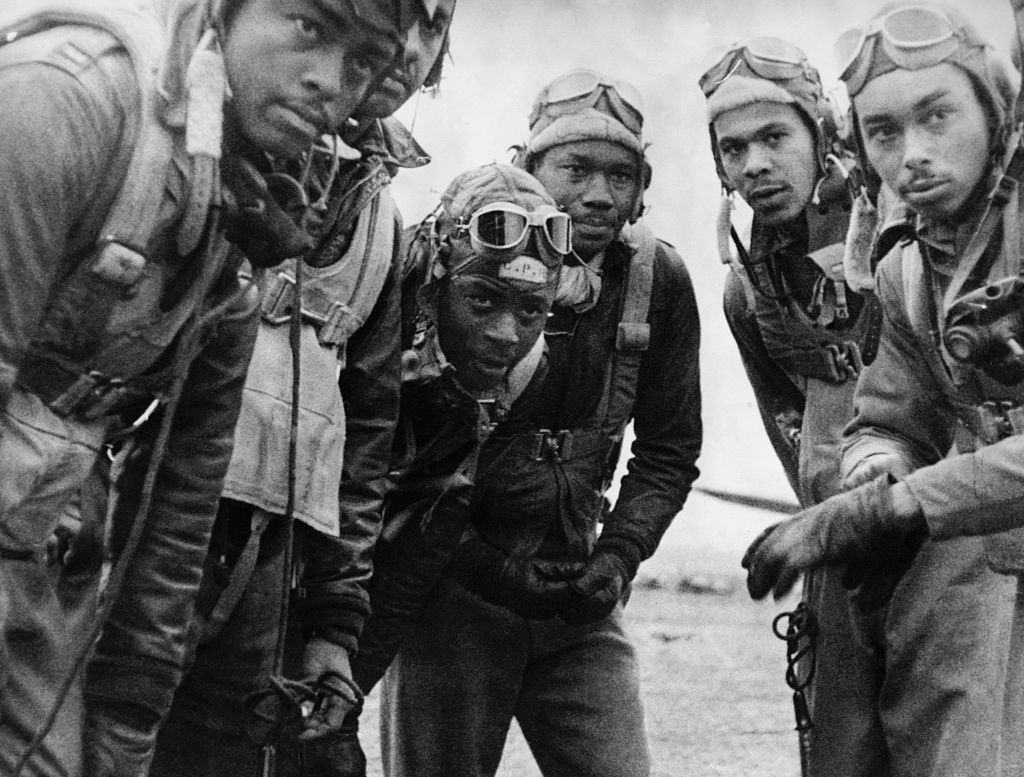
House Conservatives have turned the usually bipartisan National Defense Authorization Act (NDAA) and the defense appropriations bill into weapons in their battle against “wokeism” in the military.
The House’s version of the NDAA included provisions against transgender health care policies and abortion support in the military. Numerous proposals have further sought to restrict or eliminate all DEI training. Conservatives claim to be safeguarding the military’s effectiveness from a dire threat. “Now is not the time to socially experiment with our armed forces at the expense of readiness, morale, and our national defense,” Senator Tommy Tuberville (R-Ala.) has declared.
These charges are hardly new—and they echo the arguments made by those who opposed racially integrating the military in the nation’s past. Conservative politicians and military leaders regularly claimed African Americans were unfit for full membership, due to their perceived lack of intelligence, courage, and moral fortitude. Their presence, it was alleged, would exacerbate racial tensions and undermine unity, thus hampering overall effectiveness. “The Army is not out to make any social reforms,” explained Army Chief of Staff Omar Bradley in 1948. “It will change [segregation] policy when the nation as a whole changes it.”
Yet, history has proved that not only were these sentiments unfounded, they actually hampered military effectiveness. Indeed, the long record of African American service suggests that when the U.S. military is at its most open and equitable, it is also at its most effective.
Read more: Inside the Fight Over What Kids Learn About America's History
From the Revolutionary War through the end of the 19th century, thousands of Black soldiers served in the American military, primarily in integrated units. Their service generated plaudits and strong praise for their abilities. Commodore Isaac Chauncey famously told a Navy commander lamenting the number of African American soldiers under his command during the War of 1812, “I have yet to learn that the colour of the skin, or cut and trimmings of the coat, can effect a man’s qualifications or usefulness.” He added that he had “nearly 50 blacks on board of this Ship, and many of them are amongst my best men.” A half century later, General James Blunt similarly gushed after an 1863 Civil War battle, “I never saw such fighting as was done by the Negro regiment.” He concluded that, “The question that negroes will fight is settled; besides they make better solders in every respect than any troops I have ever had under my command.”
Despite their service in the 19th century, African American soldiers failed to earn the full citizenship that their efforts seemed to merit. Returning from service from the 1898 Spanish-American War, one group of African American veterans was greeted in Nashville by a mob of whites who attacked them with clubs before robbing them and shredding their discharge papers. “It was the best piece of work I ever witnessed,” gloated one participant. He was a local sheriff.
More rigid segregation descended upon the military in the first half of the 20th century, reflecting the increasing stridency of the nation’s civil rights struggle. In World War I, African Americans volunteered for service at a rate significantly higher than their percentage of the population, but racist ideas and tropes limited their participation. Most soldiers, even those with combat experience, were limited to segregated service platoons since, as one military leader argued, African Americans lacked the necessary “mental stamina and moral sturdiness” to defeat the Germans. The military also wanted to avoid wading into what it saw as a larger societal problem. As Secretary of War Newton Baker explained: “There is no intention on the part of the War Department … to settle the so-called race question.”
Under growing public pressure, American leaders in 1918 sent two segregated infantry divisions to Europe to fight, but racist commanders had no interest in using them. Most of the men were instead transferred to French command, where they served as essentially borrowed soldiers for a foreign command. “Our great American general simply put the black orphan in a basket, set it on the doorstep of the French, pulled the bell, and went away,” recalled one of the leaders of the 93rd infantry.
The results were revealing. African American soldiers who received decent training and competent officers—most famously the 369th infantry regiment, which stood at the front longer than any other American regiment—performed well. In fact, the French government awarded the Croix de Guerre to the entire regiment. Approximately 170 men also received the medal for individual actions. By contrast, units assigned to the U.S. Army had less training and more overtly racist officers—and less success.
The lesson was obvious: when welcomed as partners in the military effort, African American soldiers could make a significant contribution. When they were treated as second-class citizens, their performance suffered.
World War II reinforced this message. African Americans again flocked to serve their country, only to be greeted by segregated units and racist mores. The War Department argued that changing the longstanding exclusionary approach “would produce situations destructive to morale and detrimental to the preparations of national defense.” Accordingly, officials insisted that “no experiments should be tried with the organizational setup of these units at this critical time.” Integrating units was simply too risky. Instead, most African American soldiers were relegated to service units where they faced rampant discrimination and exclusion.

Toward the end of the war in Europe in 1945, however, battlefield demands again forced military leaders to invite African Americans from service units to volunteer for combat platoons serving alongside white units at the front. Thousands volunteered, despite the fact that doing so meant a demotion for many of them. Army officials selected more than 2,000 and many went on to serve in rifle platoons along the European front.
A survey of white officers who served in companies that fought with these platoons offered indisputable evidence of the value provided by these African American soldiers. Although 64 percent of the officers admitted that they were unhappy about the decision at first, 84 percent said the men did “very well” in combat, and 16 percent said they fought “fairly well.” Seventy-seven percent reported that their feelings about the race had been improved by the experience. “They're the best platoon in the regiment,” admitted one officer. “I wish I could get a presidential citation for them.”
In 1948, President Harry Truman ordered the integration of the military. But the services, especially the Army, dragged their heels. The Army was “not an instrument for social evolution,” insisted Army Secretary Kenneth Royall, who argued that such increased diversity would hurt recruitment and damage the morale of white soldiers.
This meant that at the outset of the Korean War, many units remained segregated. Again, however, they performed fairly well—the segregated 24th Infantry Division won one of the first battles of the war, capturing the strategically important town of Yecheon. General Douglas MacArthur even publicly praised the men, noting that they had “fought a splendid delaying action against overwhelming odds . . . [and] is making every yard the red Army gains increasingly more costly."
Yet, once again a lack of training and equipment, combined with poor morale that stemmed from racist treatment by their officers and the structural racism endemic in the Army, meant that future fighting went poorly for the 24th.

The court martial system spoke volumes about the disparity of their treatment. African American troops were 28% of the membership of the 24th Division, for example. Even so, they made up 88% of those charged with offenses, and received 97% of the convictions. Of the 32 African Americans in the division who were convicted, four had trials lasting 50 minutes or less, with each receiving a sentence of life imprisonment, despite the fact that, in most cases, the soldiers’ military-appointed lawyers offered virtually no defense for their clients. Growing public outrage, combined with the battlefield necessities in Korea and the emergence of more open-mined military leaders, finally forced the Army to abandon its segregationist policies in the middle of the war, thus opening the long-closed door to more equitable service opportunities. This step produced positive results. More welcoming policies have helped with recruiting efforts, brought valuable new perspectives to the effort to solve complex problems, and enhanced the nation’s image when it interacts with the diverse and interconnected world of the modern era. A commitment to diversity has thus proved to be a critical strength, not a weakness of the American military.
Once again, however, right-wing politicians are sounding the alarm over policies designed to make the military more diverse and welcoming. Their complaints sound similar to those put forward by military leaders and policymakers who fought against integrating the army—and whose concerns proved misguided and counterproductive. If history is a guide, their resistance to diversity efforts will damage military effectiveness and weaken the country’s armed forces.
Mitchell Lerner is Professor of History and Faculty Fellow at the Mershon Center for International Security Studies at The Ohio State University. Made by History takes readers beyond the headlines with articles written and edited by professional historians. Learn more about Made by History at TIME here.
More Must-Reads from TIME
- Cybersecurity Experts Are Sounding the Alarm on DOGE
- Meet the 2025 Women of the Year
- The Harsh Truth About Disability Inclusion
- Why Do More Young Adults Have Cancer?
- Colman Domingo Leads With Radical Love
- How to Get Better at Doing Things Alone
- Michelle Zauner Stares Down the Darkness
Write to Mitchell Lerner / Made by History at madebyhistory@time.com
